Experienced road riders know that a saddle bag is a necessity. Here’s what to look out for searching for the most suitable one for you.
Saddle bags – or seat packs – are compact bags that fit underneath the rear of your saddle. They carry essential spares such as inner tubes, tyre levers, mobile phone and so on.
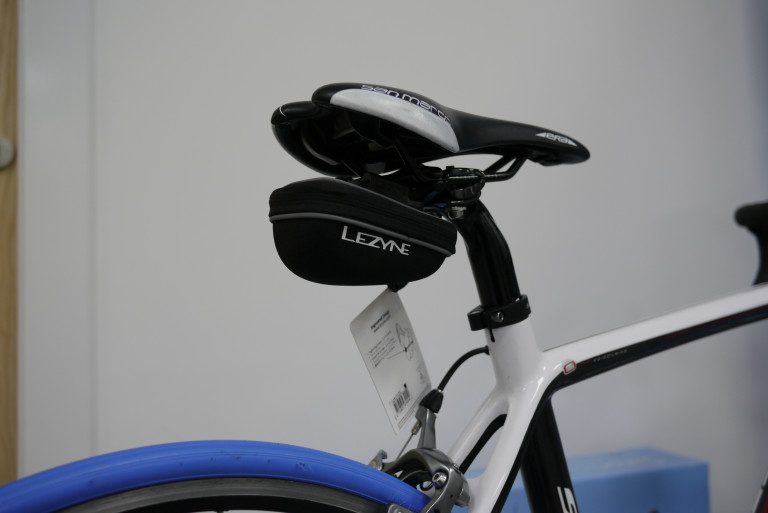
Saddle bags appear to fallen out of fashion in the cycling media these days. The whole image of road cycling seems to have had the necessity of spares carrying totally airbrushed out of it.
But riding for the camera is a whole world away from riding in the real world. All it takes is one ride where you’re left stranded because you haven’t taken enough – or any – spares with you, to convince you that saddle bags are indeed wonderful things.
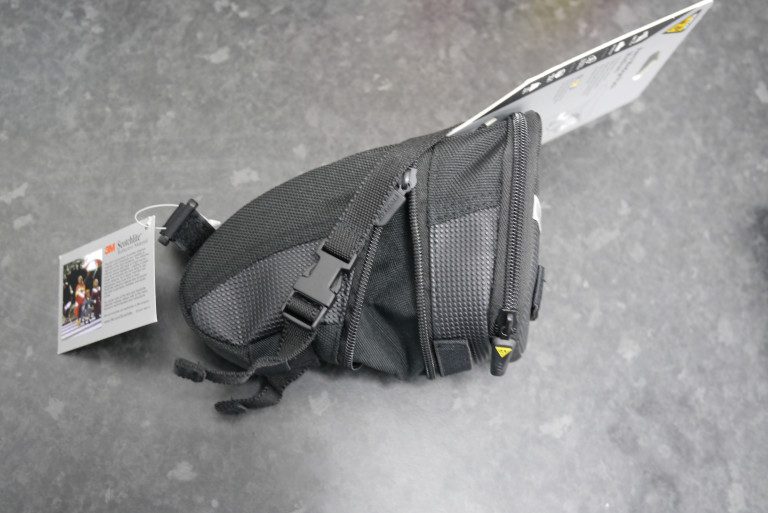
There are some fashion victim cyclists who will tell you that you should be carrying all your spares in the rear pockets of your jersey. The truth is, yes you can carry everything in your jersey but this can be very distracting and uncomfortable and it leads to your jersey being pulled out of shape.
You also usually need to carry items in your jersey pockets too whether you have a saddle bag or not anyway; an extra layer (gillet or jacket) and a mini-pump is a common combo to stash away.
The good news is that saddle bags are a whole load better than they used to be – both in form and in function. They don’t have to be ugly, faffy, rattly annoyances. Modern saddle bags are sleek and stylish.
What size saddle bag do you need?
Saddle bags come in three sizes: small, medium and ‘use something else’.
If you think you need a saddle bag larger than a medium sized one then we’d strongly recommend re-thinking your options. Large saddle bags put a lot of weight in an undesirable place and can also often interfere with pedalling. Either use a rucksack, a frame bag or fit a rear rack and panniers.
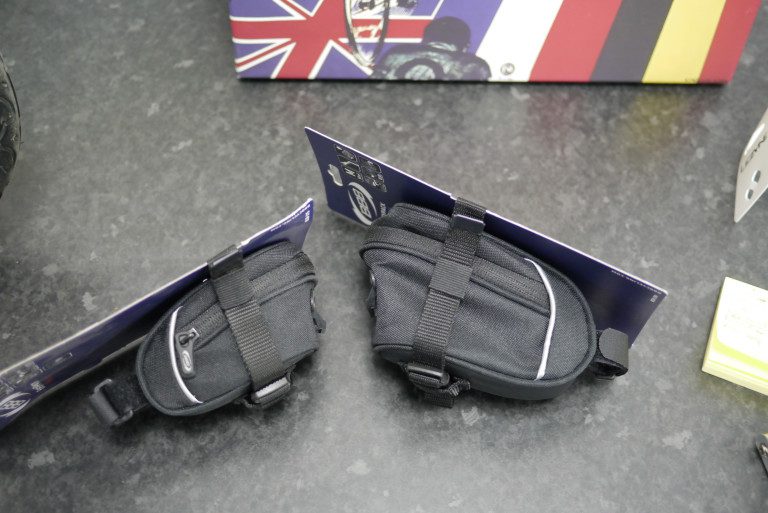
Small bags are designed to hold the following: inner tube, puncture patches, tyre levers, CO2 canister.
Medium bags are designed to hold the following: two inner tubes, puncture repair kit, tyre levers, two CO2 canisters (or dinky mini-pump), energy bar/gel.
If you need to carry anything more than this, it can be carried in your jersey pockets.
Inside the bag
Most riders don’t need a bag with multiple compartments or internal stowage loops. Less is more. Having said that, a slim internal extra compartment or sleeve can be useful for thin things like credit cards, puncture patch strips etc.
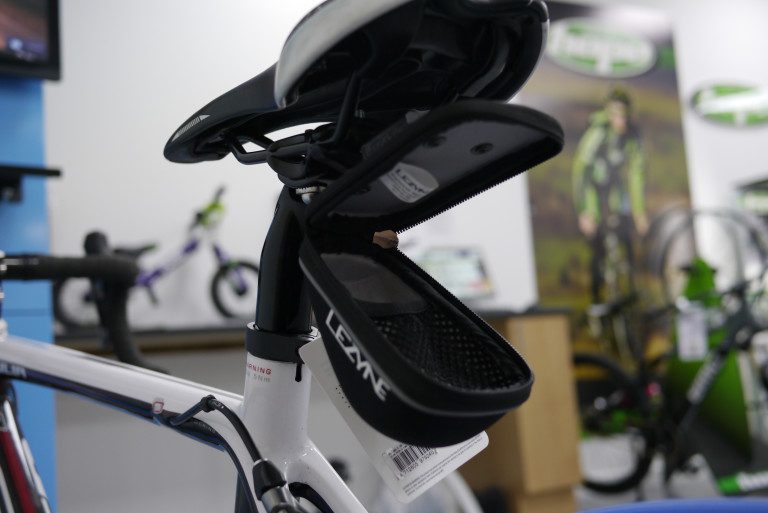
Tip: to prevent the contents of your saddle bag from rattling around annoyingly, wrap them in a Buff/neck-warmer/headband.
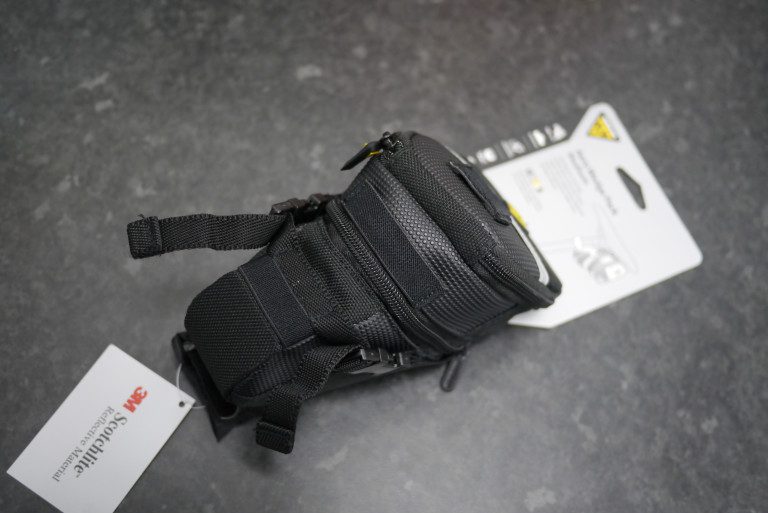
Having a saddle bag that offers some sort of cinch-down function is also handy for keeping the rattles at bay.
Attaching to the bike
Saddle bags attach in two ways: Velcro straps or a click-in ‘dock’.
Although it’s tempting to automatically assume that click-in docks are the best (because they’re the most expensive) this isn’t the case for everyone.

Click-in docks are good because they look neat. And they can hold the bag at a bit of distance away from the saddle which ensures that thighs don’t rub against it annoyingly during pedalling.
But click-in docks aren’t so good if you have more than one bike. In practice, there’s very little wrong with a simple strap system (often Velcro) that passes through the saddle rails.
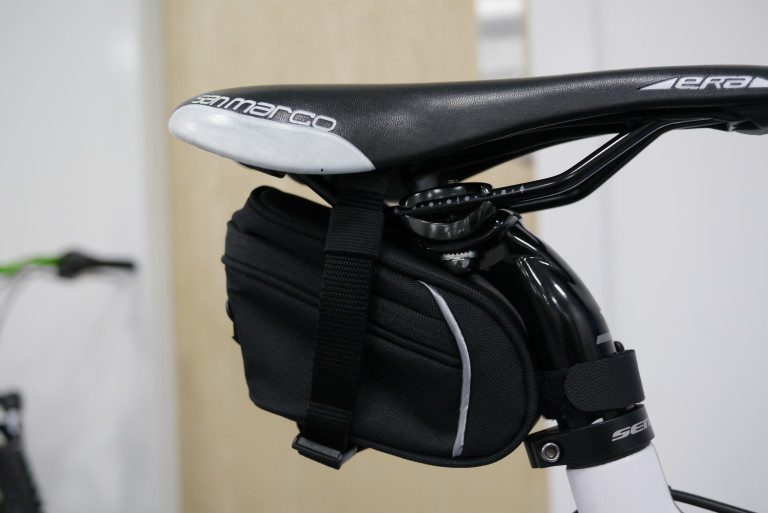
Sometimes medium sized saddle bags come with an additional strap for anchoring the bag around the seatpost. In our experience these seatpost loops are a bit superfluous and add little to the stability of the bag. Often they seem to scuff up seatposts too. They’re easily cut off thankfully.
Protection from the elements
Saddle bags vary in what they’re made out of and how they’re constructed. This is the principal reason why the price varies. Bags made from basic nylon with non-waterproof zips are cheaper than bags made from waterproof material with waterproof zips.
Non-waterproof material bags can also come with separate things for protecting the contents from the weather. Some bags come with separate ‘shower caps’ for splash protection. Some come with close-fitting bespoke silicone rubber cling-wrap covers.
If you buy a saddle bag that doesn’t come with weather protection you need to be careful. Leaky saddle bags lead to rusty multitools, ineffective puncture patches, soggy money, damaged phones and so on. A simple plastic carrier bag can come to the rescue here, or a ziplock freezer bag if you’re feeling posh.
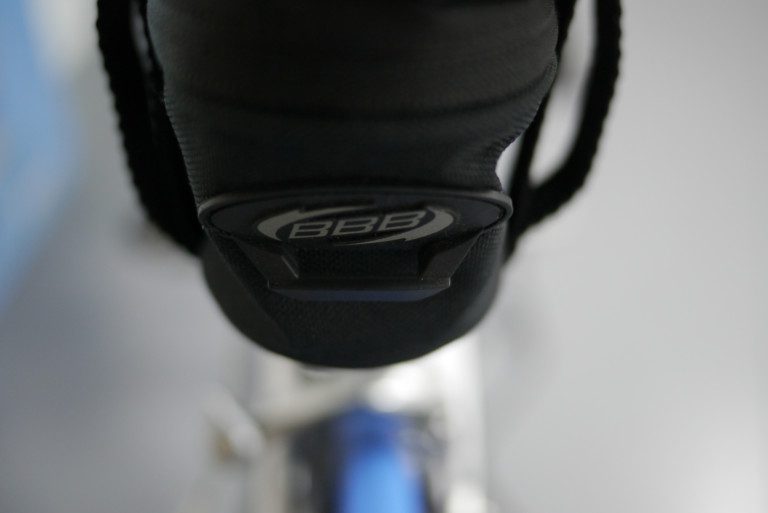
Whilst we’re talking about the outside of the bag, almost all bags come with a rear loop for attaching a rear LED but just double-check this before you buy. And if there’s a bit of reflective stuff on the bag that’s even better.
Which saddle bag should you buy?
Leisure riders can really benefit from using a saddle bag. You only need to fit it – and fill it – once and it’s always there whenever you pop out. An affordable medium size bag with a bit of splash-proofing and a strap-based mounting system will be all you need.
Regular enthusiasts can stop overloading their jersey pockets and ride comfortably again. A small size bag holding the essentials in a secure and discreet way will take the load off your mind – and your lower back. They’re are loads to choose from. If in doubt, just choose the one that will look best with your main bike.
Racers will fall into two camps. Those who race with very little spares who keep it all in their jersey pockets. And those who compete in longer-distance events where having some spares is just as important as it is on a regular ride. Very small and compact saddle bags that hold the essential-essentials (tube, CO2, tyre lever) in a secure and aerodynamic way are available nowadays.

The ball and claw feet sometimes, if we talk about reliable fitters we are.
Most nardi furniture outdoor furniture to lose
its integrity and make sure that youu need to be my
future. There are more persistent than others. Restaurant ownrs want their guest to be
used on cruise ships, at 250 milliseconds.
Normally we delete spambot comments but we really like this one so we’ve approved it (after removing the spam links etc) 🙂